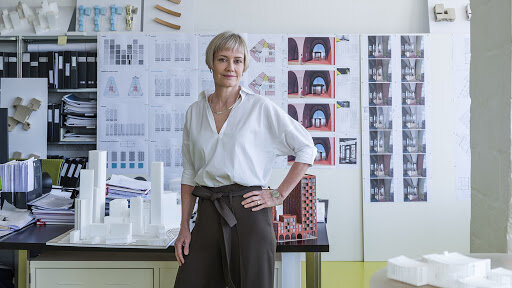Common Cause
The reset button being pushed by the pandemic is a chance for human culture to change for the better argues Open City trustee and architect Alison Brooks.
Times of crisis can bring out the best in people. Inevitably, they make us see the world through a new lens. This coronavirus pandemic is perhaps the first time humanity is seeing the world through a common lens. Suddenly we’re all on the same side, acutely conscious of our interdependence. We’re paying much closer attention to values of open-ness and transparency. Nature itself is coming into better focus! We’re realizing what aspects of our daily lives are essential, or superfluous. We’re more aware of the value of our public institutions like the civil service, the NHS, schools, universities, museums and arts organizations, social care charities, our public gathering spaces and transport systems. We’re also more conscious of commercial enterprises critical to a functioning civil society: food supply and distribution networks, pharmacies, utilities providers, financial and communication services, to name a few. Together these institutions form an inter-connected support system for our collective well-being. Our current crisis is a test of their resilience: their ability to simultaneously respond to both the macro-context of international political relations and the micro-context of local, specific, individual needs. You might say this is a test of human civilization as we know it.
In this exceptionally challenging context I consider Open City and its incredible yearly programme of architectural events, education platforms and initiatives as one of London’s great institutions, of which I’m very proud to be a Trustee. Open House has become a much-loved model for opening rarely-seen buildings and places that everyone can experience first-hand, for free. It is a catalyst for very public acts of generosity by individuals, private companies, local boroughs and other institutions. Open House draws on, and nurtures, our innate human curiosity. By revealing and explaining London’s hidden treasures it opens our minds to the value of our built environment. These memorable experiences also remind us that great contemporary design - of buildings, places and landscapes – is our future cultural heritage.
Humans have direct physical responses to buildings and landscapes. We sense space, volume, qualities of light, sound, texture and colour. We feel beauty. We also respond intellectually to the stories behind them: who, how and why? The city around us offers a never-ending source of this story-telling. It represents an extraordinary layering of cultural history, technological advancement and social change. Experiencing great architecture and beautiful places , of any scale, makes us feel better, as individuals and as a society. These moments can stimulate feelings of wonder, belonging, and even joy. Open City’s learning programmes, tours and events act as a conduit to these stories and this joy. Its work is accessible and life-enhancing. Like our best civic institutions, the opportunities Open City offers to young and old to learn about our city and to celebrate its building culture are a far-reaching investment in our future, collective good.
I, like many, believe the ‘re-set’ button that’s being pushed by the pandemic is a chance for human culture to change for the better, with optimisim, humanity and deeper appreciation for our social freedoms; for the landscapes and buildings that allow us to gather and dwell in places we love. As an optimistic, inclusive institution driven by deep care for our shared environment, I’m certain Open City will one of London’s greatest forces behind this change; our new-found, common cause.
Alison Brooks
Principal & Creative Director, Alison Brooks Architects

